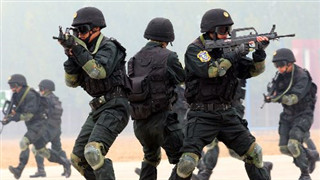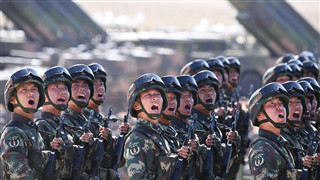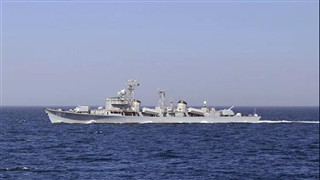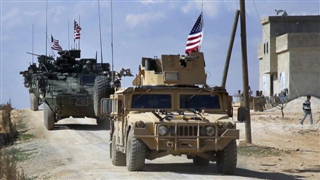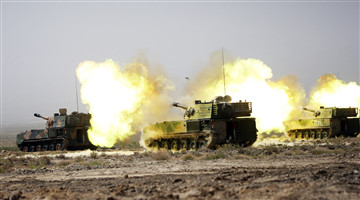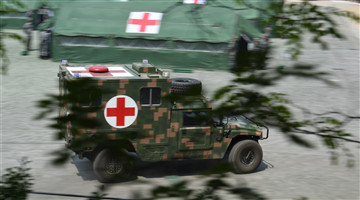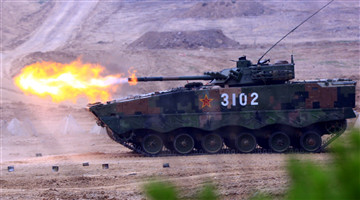According to media reports, based on the agreements reached between the US and Japan, the US would transfer part of its marines stationed in Japan’s Okinawa Prefecture to the US Pacific territory of Guam, probably from as early as October 2024 according to the US officials.
Regarding the transfer of US troops stationed in Japan, the US and Japan have been talking about without substantive action for over a decade. Why is this happening all of a sudden now?
Military observer Dr. Liang Fang, Professor of Strategies Research Institute in Chinese National Defense University believes that the sudden announcement of transfer is mainly to fortify the military presence in the Western Pacific, while also to ease tensions with the Japanese people.
From the US military perspective, the transfer is an important part of the military power adjustment of its Indo-Pacific Strategy. At present, the US troops in Japan mainly cover the Korean Peninsula, while the troops stationed in Australia mainly cover the South China Sea and the Indian Ocean. Guam is an important geostrategic fulcrum of the US military in the Western Pacific. The deployment of troops to Guam mainly aims to strengthen its influence in the Western Pacific region.
From the Japanese perspective, the US troops stationing in Okinawa have not been welcomed due to their constant incidents and crimes such as abusive drinking, rape, killing, and involvement in drug trafficking, etc., resulting in a serious sense of insecurity in Japan. In addition, the US military airport is located in the center of the city, with the horrendous noise from fighter jets’ daily take-off and landing being extremely disturbing. The local Japanese people have repeatedly negotiated with the Japanese government, requiring the US military base to be relocated as soon as possible.
It seems that the US has made concessions by reducing the number of US troops stationed in Japan. But as a matter of fact, the US military has not announced its complete withdrawal and the US still has its military base in Okinawa. Temporary leaving does not mean leaving permanently. The US military can come back anytime. The transfer may relieve the contradictions temporarily but scratching below the surface reveals a deep contradiction remaining unresolved.
The reason why the US wants to transfer the troops to Guam is because Guam is the hub for its strategic initiative.
Being in the second island chain and a territory of the US, Guam is the most important strategic fulcrum in the Western Pacific for the US. It is more than 2,700 kilometers away from Taiwan, more than 2,200 kilometers from the Philippines and 6,000 kilometers from Hawaii.
This means that if a US B-52 bomber takes off from Guam, it can reach Tokyo and Manila in three hours, Shanghai in four hours, and Pyongyang in four and a half hours respectively.
The geopolitical factors make Guam a valuable strategic hub in the Western Pacific, which the US wants to take advantage of. It can control the Tsushima Strait in the north and the Straits of Malacca in the south. In the event of a war, the US can quickly dispatch, deploy, and maneuver troops and can master the strategic initiative easily. This is a very important reason why the US chose to transfer its Marine Corps to Guam.
The transfer of some Okinawa-based marines will not weaken the actual US control of Japan.
Most of the US troops stationed in Japan will remain, while only 5,000 Marines in Okinawa will be transferred, and some important weapons and equipment will stay too.
What does it mean, by contrast, that the US has recently provided Japan with F-35 fighter jets and sold two sets of land-based Aegis missile interception systems? It implies that the US is fortifying its strategic deterrence power in Japan as a pawn and the most important ally of the US in the first island chain, which can still play an important deterrence and containment role at the forefront.
Disclaimer: Navy Senior Captain, Dr. Liang Fang is a Professor of Strategies Research Institute in Chinese National Defense University. This article is originally published on CNR.CN, and is translated from Chinese into English and edited by the China Military Online. The information, ideas or opinions appearing in this article do not reflect the views of eng.chinamil.com.cn.
